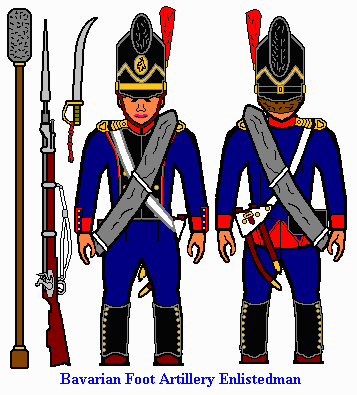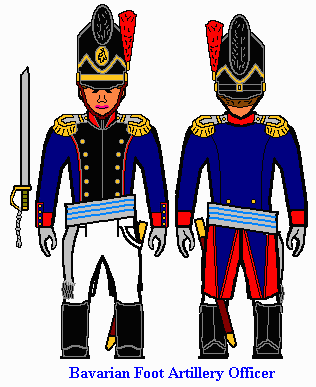
#8038 Bavarian Artillery



Dated: November 21, 2000
#8038
Napoleonic Bavarian Artillery
French: Artillerie Bavaroise
German: Bayerische Artillerie
Spanish: Artillería Bávara
Italian: Artiglieria Bavarese
Dutch: Beierse Artillerie
The Bavarian Army's outlook on artillery was typical for most German states. When the French revolutionary wars started, the artillery was split up between the infantry battalions. After the first contacts with the French, concentrated batteries made an appearance, however they relied on civilians for transport and supply. As these good men had no intention of dying, cannon were either used aggressively and lost easily (the drivers having left them to stay out of harm's way) or sited far from their optimal range. Slowly the Bavarians reformed their artillery along the professional, French lines, although the cannon themselves were built after Austro-Hungarian patterns. In 1809, the reforms bore fruit, as even Napoleon was impressed with the effect the new Bavarian artillery had on the Wagram battlefield. The Bavarian Corps that participated in the invasion of Russia in 1812 took with it 60 guns, and the gunners served well in the battles to protect Napoleon's Northern flank. When the time came to retreat, however, not even the strongest gunner could defeat the Russian winter: all the guns were lost, and none of the two thousand horses that had dragged them into Russia survived.
Like the cavalry, the Bavarian artillery put a hastily cobbled together unit in the field in 1813, to support their small detachment, while back home the army was rebuilt and re-equipped. When King Maximilian Joseph abandoned the French, his army attempted to halt the remnants of Napoleon's retreating Grande Armee at Hanau, on the Main river. The artillery fought hard to support the Bavarian conscripts and militia against the French veterans, but the French pushed through. The Bavarians had to wait until 1814 to take their revenge for that defeat, taking part in the offensive that caused Napoleon to abdicate.
These figures can be used for foot artillery. For horse (also called light) artillery, add cavalry sabres and paint the belts black. Artillery pieces and limbers were light blue-grey, with black metal fittings, while the barrels left in natural bronze. The figures can also be used for Baden artillery, whose cannon were French, and dark grey with black metal fittings.
Aris Kosionidis - England



Copyright 2000. HaT Industrie, Inc. All rights reserved. The HaT logo is a registered trademark of HaT Industrie, Inc. Any unauthorized use of content or images are violations of applicable laws and will be prosecuted to the fullest extent of the law.